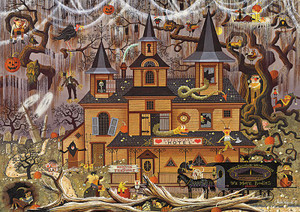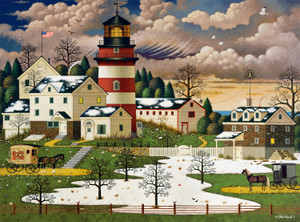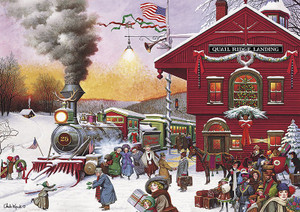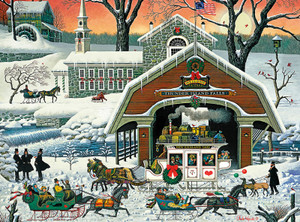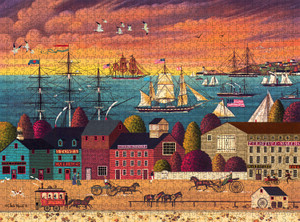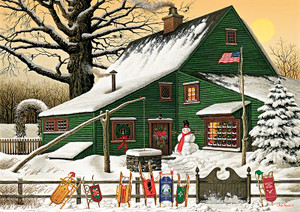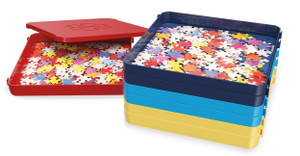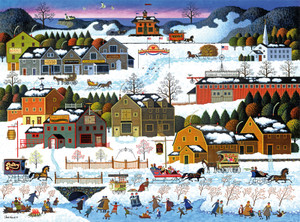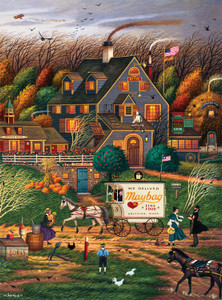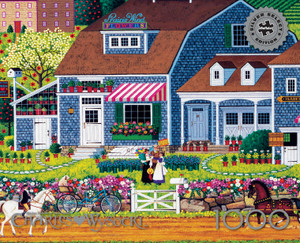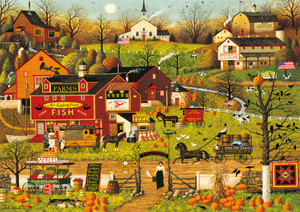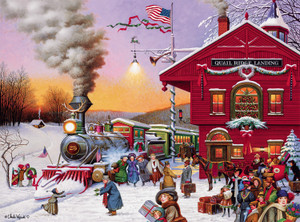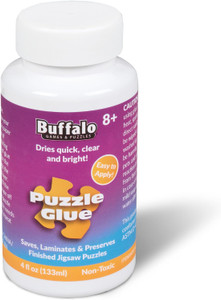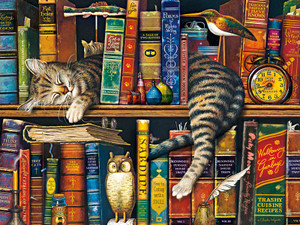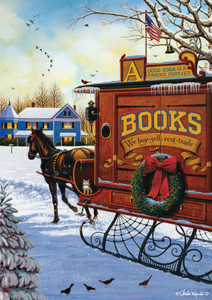Posted by Buffalo Games on Apr 6th 2022
5 Tricks to Doing Jigsaw Puzzles
Jigsaw puzzles were invented by mapmaker John Silsbury in London back in 1762. He mounted one of his maps onto wood, cutting around the countries. He then gave it to students at a local school to help them learn where the countries are, and voila! The first jigsaw puzzle was born.
Today, these dissected maps are called “jigsaw” puzzles because of how the early wooden puzzles were cut into pieces: with a jigsaw. A jigsaw was the tool of choice because it could cut the intricate curves and lines required.
First Things First: The Benefits of Doing Jigsaw Puzzles
The COVID-19 pandemic has revived the popularity of jigsaw puzzles, and companies rushed throughout 2020 and 2021 to meet demand. Puzzle makers saw sales explode by 300-400% during that time.
Why are puzzles so popular?
There are a variety of benefits that puzzling provides. Did you know that working on a puzzle can raise your IQ?
Spending just 25 minutes a day solving a puzzle can also:
- Improve visual-spatial reasoning
- Increase cognitive function and help prevent cognitive decline
- Improve memory
- Increase mental speed and thought processes
- Improve problem-solving abilities
- Improve your concentration and productivity
- Decrease your stress levels
- Improve your mood
These are benefits that are not exclusive to jigsaw puzzles for adults. In addition to the above benefits, when a child works on a puzzle, it can help develop their spatial skills and awareness.
This becomes valuable later when technology, math, engineering, and science are learned. Children’s and family puzzles can improve fine motor skills and coordination, concentration, organization, perception, and patience.
Tips and Tricks for Doing Your Next Puzzle
There are many good suggestions for puzzlers of all ages who want to learn to build jigsaw puzzles like a pro. Following are five valuable tricks to keep in mind during your next project:
1. Choose the Right Size Puzzle
The finished sizes of puzzles vary depending on the manufacturer, the puzzle piece count, and the dimensions of the actual pieces. The most common puzzles are 500-piece puzzles, which are about 15”x21” when completed with standard-sized pieces.
Other sizes for standard Buffalo puzzles are:
- 1,000-piece puzzles: 20”x27”
- 300-piece puzzles (large pieces): 15”x21”
- 100-piece puzzles: 11”x15”
Since sizes vary, check the box for the exact finished dimensions. If you’re shopping online, you should be able to find that information in the product descriptions. Watch the puzzle piece sizes, too; they can vary considerably. Some people see very tiny pieces that are challenging to hold and maneuver.
2. Set Up Properly
Many people pay close attention to the variation in the ink of the pieces to help them complete a puzzle. Make sure you always have good lighting to help you see the ink’s color and texture on each piece. This will help you discern the correct orientation for pieces and be a great asset in your quest to finish.
You should also pay attention to the surface on which you’ll assemble your puzzle. Pick a table with a surface that contrasts with the primary color of the puzzle to help each piece stand out better. Many puzzlers build on black or white tables or top of white butcher paper. Avoid glass tables! Glass tables make it difficult to stare at and sort 1000-piece jigsaw puzzles. Black roll-up puzzle mats are excellent options.
3. Stay Organized
It may seem like a huge pain to sort all those puzzle pieces into groups before diving into a new puzzle, but doing so will help you complete it without losing your mind (too much). If you are working on a photo puzzle, turn all of the pieces so that all photographs are facing the same direction.
If you’re working on a non-photograph puzzle, it will help if you sort the pieces by colors. Lay each piece flat instead of in a heap, and separate the edge pieces from everything else into their little group. You can also sort pieces that are easily identifiable, such as those with specific shapes or objects.
4. Don’t Feel Like You Have to Begin with the Border
The borders of jigsaw puzzles have limited numbers of pieces, which are usually the easiest to spot, thanks to their straight edges. While the edge pieces give the puzzle a frame, they aren’t always the best place to start. Many puzzlers recommend beginning with a group of contiguous and easily identifiable pieces.
For example, you may want to begin with the very distinct pieces that are part of the bright white fuzzy bear and not the dark blue background – a background spread across the entire border.
5. Don’t Spend Tons of Time Looking for One Piece
One of the biggest mistakes a puzzle enthusiast can make is to search for one piece for extended periods. This is especially true for a piece needed to fill a gap.
While it’s true that anyone would want to get that darn last piece in there, it’s also true that the piece you’re focused on may be missing. If it’s not missing, it will eventually turn up, often having been mistakenly placed in the wrong sorted pile.
Please start with the section of the puzzle that seems the easiest, but don’t insist on staying there until it’s complete. Try to build a section as much as possible, then move on. When you move through jigsaw puzzles, pieces from other sections start to show up. If you get stuck, move on and come back later.
Accessories for Jigsaw Puzzles
Don’t forget the puzzle accessories, which can help you out as you puzzle along. It’s recommended that you consider assembling your project on a roll-up puzzle mat to transport your masterpiece easily. There are also sorting trays available, in addition to puzzle glue and peel-and-stick puzzle savers (use the peel-and-stick for less mess).
Consider the best type of puzzle for the people working on it, the right size puzzle, the lighting, the surface, and accessories before you begin, and you’ll always puzzle like a pro!





